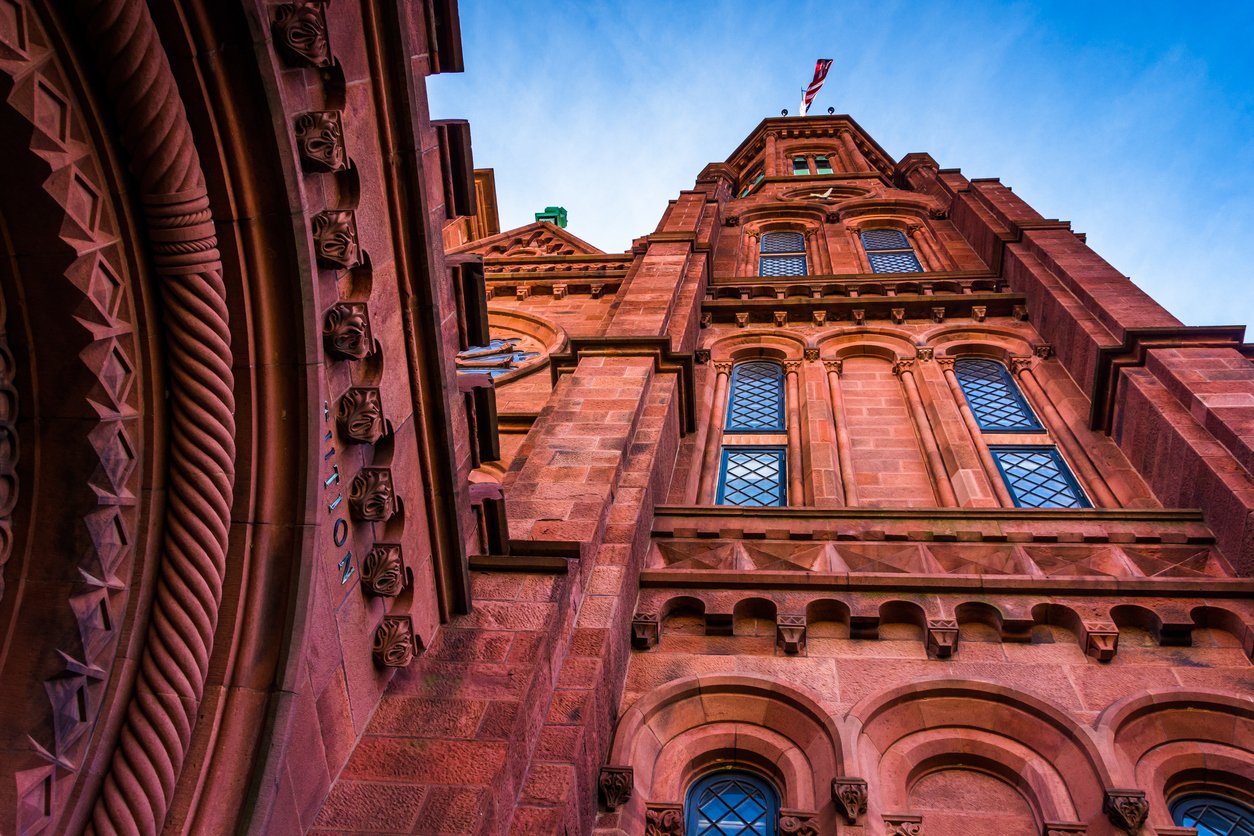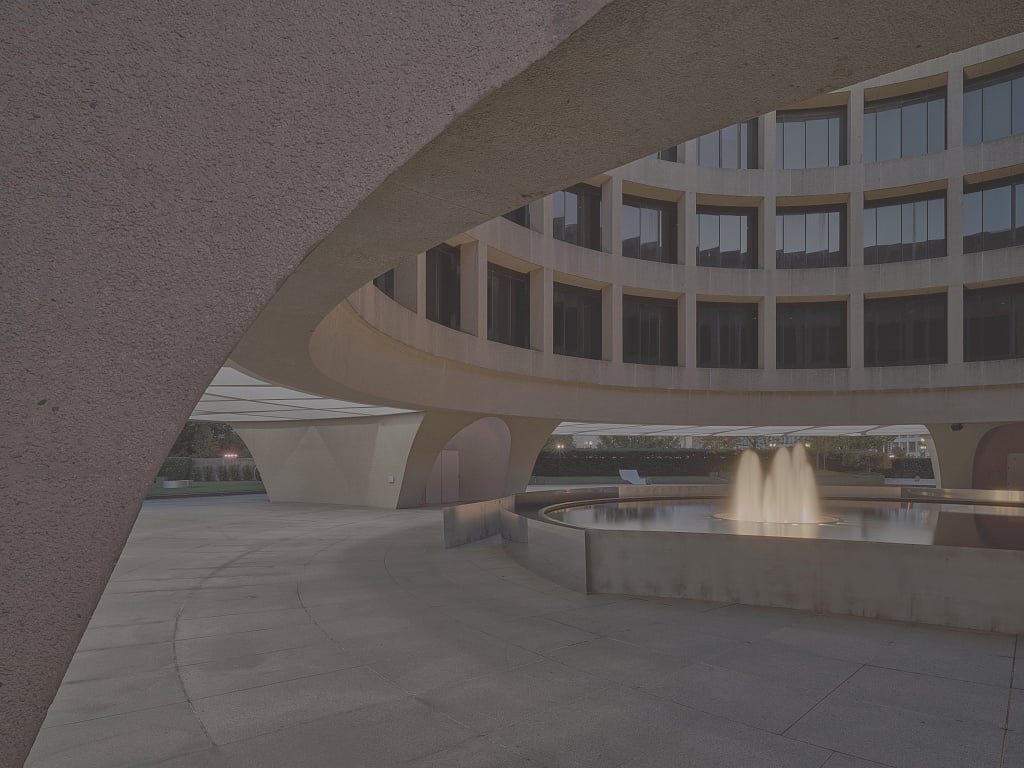This month, the maritime explorer Robert Ballard launched an expedition to find the remains of Amelia Earhart. The announcement has been met with a fresh spell of curiosity and excitement about the fate of the doomed aviator, who disappeared in 1937 along with her navigator, Fred Noonan, while the two circumnavigated the globe in her Lockheed Electra.
Ballard’s expedition will take him to the remote Pacific island of Nikumaroro. But the explorer’s winding journey also involves a crucial turn through Foggy Bottom.
That’s where Dr. Kurt Campbell, a former State Department officer in the Obama administration, first laid eyes on a mysterious photograph—and asked his buddies in the Pentagon to try to make sense of it. What Campbell learned would inspire him to reject the conventional view about what befell Earhart’s plane, and eventually to call up Ballard himself.
It’s uncertain whether Ballard’s team will be successful (and plenty of other Earhart theories persist). But if Earhart’s remains are discovered on Nikumaroro, then Campbell’s intervention will have proven decisive. In an interview edited and condensed for clarity, Campbell—who lives in Friendship Heights and now consults on Asian affairs—described how he came to believe the theory, and why he thinks Ballard will ultimately be successful.
Washingtonian: How did you become an Amelia Earhart nerd?
Campbell: My career has been basically about Asia. When I was at the State Department, I was Assistant Secretary for Asia and the Pacific, [where] I tried to bring a real focus on the [smaller] nations of the Pacific. There are probably 30 island nations, and I visited most of them—including Vanuatu, Palau, Papua New Guinea.
It was on one of those visits [to Vanuatu] that I ran into one of the searchers for Amelia Earhart, Richard Gillespie, with a group called TIGHAR [The International Group for Historic Aircraft Recovery]. These are people that have made it their lives to try to understand historical aircraft and what’s happened to them.
This was around 2010. I was there with a joint government delegation from the Pentagon, from Hawaii, from US Command. I was doing a presentation. He came up to me, and on Vanuatu, there aren’t a huge number of Caucasion guys. I remember he talked about the island: He was [there] trying to get agreement from the government to allow him to do work. And I ended up helping a little bit with that and supporting him along the way.
After that, I always kept up to speed [on the Earhart search]. I already knew a lot about her, and I knew a little about the history. But then once I read the books, I was convinced enough to get involved in it.
How did Gillespie convince you that there was an alternative theory about Earhart? And what’s the theory?
It goes something like this. There is a very prominent group of people who believe her plane ran out of gas and just crashed into the sea. And that’s the dominant group. There are fringe conspiracists who believe she was taken prisoner and all that stuff—I put that right up in the arena of Trump conspiracy fake news shit. I don’t buy that.
Then there is a small group that believes that she landed somewhere. Now, if you read most of the histories, you’re always looking for clues that are decisive, that are hard to dismiss. She disappeared in 1936 on a particular day. It has been fairly well established that for four or five days thereafter, literally dozens—up to almost a hundred—ham radio operators, including military guys on ships and on bases, received what they believed to be a Mayday call from her. The only way that works is if she landed somewhere. She would have had to land because she couldn’t have remained in the air during that period. And many of the notes…suggest she said that she’d crashed on an island.
There are problems with the theory of her crashing on an island, though. It would mean her navigator made a horrific error, somehow. Because it’s quite off course. And it’s also at the outer edges of her fuel use. But still, how do you explain these transmissions?
Further—and this is important—her airplane used a wire on the bottom of the plane to transmit. You know, like an antenna on the back of your car. They ran a wire from the propeller to the tail about 30 feet long. Now remember this. On this island [Nikumaroro], the tides sweep up dramatically when the tides are in, and then they go out very far—we’re talking about hundreds of feet. So by this theory, she lands on hard sand when the tide is out. But then a couple times a day, the water sweeps forward. And by that theory, parts of the airplane are underwater.
They looked at the time when these particular, alleged communications were received. They coincide quite amazingly with when the tide is out. Because when the tide is in, the wire antenna is underwater. The part underneath can’t transmit. They have to wait when the tide goes back out again.
Then, over time, the belief is that the airplane was taken out to sea.
You had a pivotal role involving a mysterious photograph. How did that come about?
The so-called Bevington photo. A historian at TIGAR was poring through these survey photos by a British photographer in 1937. They found this smudge, and it happened to be exactly where we thought a plane had tumbled off the sand. They thought it looked like something mechanical.
They brought it to me [around 2011]. I see the photo, and I realize that it’s not enlarged enough. So I took it to my friends in the Geospatial Agency. Then I took the image that came from that over to a group at the Pentagon that identifies aircrafts and ships, that basically evaluate often-grainy pictures. You’ve seen [aerial] pictures of the Cuban Missile Crisis—‘That’s a launcher’ and stuff—it’s groups like that.
What I have to be careful—well, this is not government business. But I did it. So sue me. I’m not going to lie, I did it. I’m sorry, but I still think that it was part of the national interest to find it. So I took it to a government group that used enhancing technology to get a clear image—technology that’s unbelievable.
I remember when I first saw it, when I got it back a week later—I cannot tell you how it felt. It was unbelievable. Because when I saw it, it was unmistakably landing gear.
How could you possibly tell that?
Imagine a wheel, and then imagine there is a cover on the outside of it. You crank it and fold it back into the airplane when the airplane is flying. And when it opens up, you see a very distinctive, round hoof that surrounds the wheel. And it’s unmistakable. Very few airplanes had those—the Electra was one of the first of its kind. When you see it, you just think, Oh my God, oh my God.
I took it to the Pentagon. I didn’t tell them what it was. They said this looks like a wheel configuration with a hood of an early 1930’s plane, perhaps an Electra. And that’s the airplane she was flying.
What was the initial reception to this idea?
At the State Department, we did this big event on women aviators and discovery in the Pacific. It was during that period I realized I had just stumbled into it—there are incredibly divided views about happened to [Earhart].
[Before the event] our friends at the Smithsonian called [Secretary] Clinton and said, ‘This is crazy,’ ‘You can’t do it,’ ‘This is all shammery.’ Most of the people think this is just a crazy theory—it’s like religious sects in the 1800s. People have very strong views. And they think others’ are outlandish.
But I had my own doubts. You start thinking: Am I crazy? Am I projecting? Should I be doing this? My wife was a little worried—like, have you been touched? So I needed help. And I needed support. Just to test my theories. Was this crazy?
And that’s why I brought in Ballard.
This is Robert Ballard, of Titanic fame.
Bob Ballard—I’d been in the Navy with him over the years. I called him. He immediately made himself available. He came to my office, reviewed all the data, went through everything, read books. He basically validated [the theory]: ‘Yep, this is absolutely worthwhile. You want to go and give it a shot.’ And he became a huge supporter of Gillespie.
I will tell you, Ballard is world class. He is adventuresome. He’s a risk taker. He’s realistic. He’s supportive. He is a great American.
So Ballard is now leading an expedition at Nikumaroro as we speak. What are they looking for?
Basically, this is a coral mountain that descends very rapidly to very, very deep waters—thousands of feet. The aircraft has two metal engines, one on each side, and then it has a spine down the middle of the airplane. The plane is essentially built around it, with wood and aluminum. Almost all of that will be gone. The only thing that will remain will be pieces and parts of the two engines, and perhaps the metal line across the spine of the airplane.
So you’re using your technologies and capabilities—a magnetometer, certain kinds of side-seeing radar. Gillespie never had those capabilities. He’s been after this for years, and not being able to nail it down.
What Ballard is doing is he’s bringing a whole team to the island—guys that run the magnetometer, that can scan the bottom. But at the same time, he’s bringing coastal anthropologists. They’re going to excavate, to try to find a couple of bones. They have specialists who worked with gathering remains in Vietnam and elsewhere. And if they find human bones, they’ll do DNA studies. So they’ll try to attack this at every possible level. Remnants of the aircraft, anything from bones, and a deep analysis of everything on the island. And they have the skills, capabilities and resources to pull this off.
Did you try to go to Nikumaroro?
I could have been on that team, but I couldn’t go because of family stuff. I’m just a small cog in this. The person who deserves the most credit is Rick Gillespie, who’s dedicated his life. If Ballard finds it, he’ll be a footnote, a very important footnote. But Gillespie really paved the way, and Ballard is such a gracious guy, he’ll acknowledge him.
Has Ballard contacted you while he’s out there?
They’re on radio silence. We don’t know what’s happening. Every day I’m waiting to hear. There’s been nothing to date.
Ballard is known for being incredibly thorough and careful. And he only acts when he’s certain. The thing I’m excited about is that we’ll know for sure—or we’ll have a really good sense—of whether this is possible or not. I’m so excited. I’m thrilled it will happen. Hopefully, we’ll see.



















